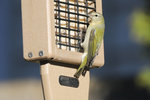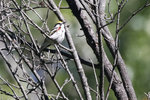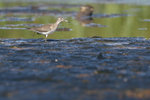


One thing I always emphasize: You don’t have to be able to name birds’ species to enjoy watching them. They are delightful, interesting neighbors.
Given this, I wonder why many birdwatchers, myself included, are so deeply committed to keeping lists of what birds they see and identify.
Sometimes it’s a simple exercise. Whenever my son Aaron and I go to the Billy Frank, Jr. Nisqually National Wildlife Refuge, we each make a prediction about how many species we’ll see or hear during our visit. But sometimes keeping bird lists gets much more involved and can become a habit of a lifetime.
But why? What drives this compulsion? I think it’s an expression of the “collecting” gene. It may not be actual genetics, but I do think there’s an inherent drive in a lot of humans to collect things.
Be honest with yourself. Have you, during your life, done a bit of collecting? Maybe it was a youthful leaf collection. Or bottle caps, or baseball cards. Or, during college, different brands of beer cans. And music; I know quite a few folks who are still expanding their music collection. Many surely have more music than they have time to listen to. Or more movies than they have time to watch. Or, of course, postage stamps.
Learning to identify bird species and then keeping an observation notebook or a checklist provides some benefits. First, it’s an entry into birdwatching and a grand way to exercise your collecting impulses without cluttering up the house or posing disposal challenges for your heirs.
And, just as important, it’s fun and sparks learning. Just by making notes about the birds in your yard, you might notice patterns; for instance, what time and how often a certain species visits your feeder. You might notice an identifying feather pattern, making that visitor into an individual. Some people give their regulars names.
A friend in the Olympia area has a hummingbird feeder and, one recent afternoon, she heard a hummingbird whose hum was in a lower register – a distinctly different sound. It was just a little longer, more slender and darker. It came from a different direction than others and flew off in a different direction too. It only stayed for a few minutes, then zipped off. We concluded it was a locally rare, Black-chinned Hummingbird.
Many birdwatchers (or maybe, given the theme of this column, I should call us bird collectors) keep extensive lists of birds seen and identified. It might be for a trip, a year, or even a lifetime. There might be lists for different geographic areas. Many local folks have a list of the species they have spotted in Thurston County, and I’ll bet some of them wish they had seen that Black-chinned Hummingbird.
Our photographer for this column, 15-year-old Liam Hutcheson, keeps careful lists of his observations. This year he is doing what’s called a “Washington Big Year,” seeing how many bird species he can record in the state in one calendar year. I asked him recently how his year list was progressing, and he reported that he was at about 335 species and hoped to reach at least 350 by December 31.
He has journeyed all over the state, and out on the ocean, visiting out-of-the-way areas and chasing down leads on rare birds. While Liam and I were out taking photos, Liam got a notice that a Solitary Sandpiper was seen along South Bay Road. Off we rushed (you never know how long a wandering rare bird might stay) and there it was. A bird for Liam’s year list, and for my county list as well.
Our state is visited each year by a few vagrant birds that have wandered off their usual migration track. It seems birds’ ability to sense magnetism is sometimes faulty, resulting in a bird migrating 90o or even 180o off direction. When that happens, it’s great news for birders looking to expand a checklist. Such news flies around (so to speak) the various rare bird websites. This year Liam has seen and photographed several vagrants, and three of them accompany this column.
The ultimate big year challenge for serious birdwatchers is a United States Big Year. It’s fun, I suppose, but also serious and costly. If you want to get an idea of what’s involved, I recommend the 2011 film The Big Year. It’s a light-hearted comedy that will give you an idea of where rare birds can be found, and the lengths serious folks might go to in order to see them.
Pursuing a Big Year is a collecting compulsion far beyond the odd beer can. But it’s a compulsion that yields a strong bond to the wild, natural world, a habit of careful observation of details, and a deep appreciation for the mysteries of birds’ abilities and musicianship.
George Walter is the environmental program manager at the Nisqually Indian Tribe’s natural resources department; he also has a 40+ year interest in bird watching. He may be reached at george@theJOLTnews.com
Photos for this column are provided by Liam Hutcheson, a 15-year-old Olympia area birder and avid photographer.
Comments
No comments on this item Please log in to comment by clicking here